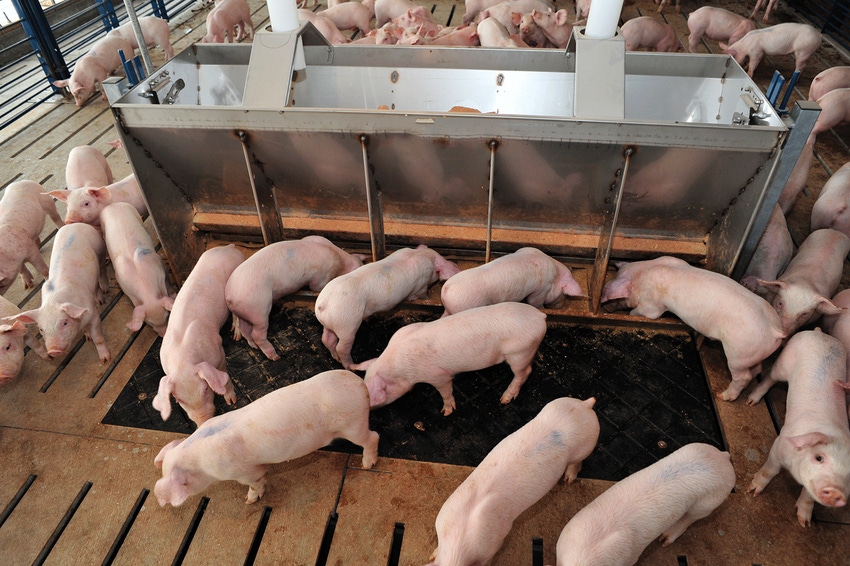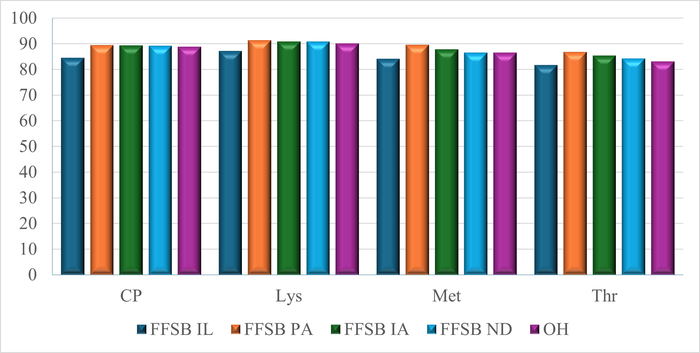Is there a nutritional difference in full-fat soybeans fed to growing pigs?
Study examines chemical composition and standardized ileal digestibility of amino acids in five sources.
February 29, 2024

By Nelson Camillo Ruiz-Arias, Su A. Lee, Hans Stein, University of Illinois
Soybean meal is recognized as a valuable source of protein not only for feeding animals but, more recently, in human diets as well. The high nutritional value of soybean meal is determined largely by the amino acid composition of the protein, but this potential is attained only after a certain amount of heat treatment has been applied. Although soybean meal is the most commonly used source of AA in diets for pigs, full-fat soybeans can also be used without prior oil removal provided that they are heat-treated.
Full-fat soybeans contain approximately 35% crude protein and 18 to 20% oil. There is, however, a lack of information about the nutritional value of FFSB if used in diets for pigs and it is not known if the nutritional value depends on the geographical area where the beans were grown. However, information about the chemical composition of FFSB as well as the digestibility of AA is required to formulate diets for pigs.
Therefore, an experiment was conducted to test the hypothesis that there are no differences in the nutritional composition of soybeans grown in different regions in the U.S. The second objective was to test the hypothesis that there is no difference in the standardized ileal digestibility by pigs of CP and AA among FFSB grown in different regions in the U.S.
Experimental procedures
Five sources of soybeans were procured from Illinois, Pennsylvania, Iowa, North Dakota and Ohio. All sources were extruded at the same facility to inactivate trypsin inhibitors. Samples were then analyzed for dry matter, gross energy, nitrogen, AA, acid-hydrolyzed ether extract (fat), ash, minerals, starch, insoluble dietary fiber and soluble dietary fiber, Samples were also analyzed for sugars and trypsin inhibitors.
In the AA digestibility experiment, each source of FFSB was included in one diet as the only source of AA and a N-free diet was formulated to determine basal endogenous losses of AA; thus, a total of six diets were prepared. Six growing barrows (initial body weight: 85.50 ± 3.34 kg) that had a T-cannula installed in the distal ileum were allotted to a 6 × 6 Latin square design with six diets and six periods. Therefore, there were six pigs per diet. The daily allotment of feed was provided each day at 0800 h and water was always available. All diets contained 0.40% chromic oxide as an indigestible marker.
Results
The chemical analyses demonstrated that concentrations of DM, GE, CP, AEE and ash were not different among the five sources of FFSB regardless of the origin where they were grown. Adjusted to a 88% DM basis, FFSB contained an average of 5,088 kcal per kg; 33.8% CP; 19.2 % total dietary fiber; 17.2 % fat; and 5,4 % ash (Table 1).
University of Illinois
The FFSB also contained 3.8 % stachyose and 0.65% raffinose. The rest fraction was calculated to be 1.83 average percent in the five sources of FFSB, which indicates that the calculated components accounted for practically all nutrients in the five sources of FFSB. Overall, the analyzed composition indicates that the FFSB presently grown in the U.S. contains slightly less CP and fat than previously analyzed. This is consistent with observed reductions in CP in soybean meal that has been reported during recent years. However, the high concentration of energy indicates that FFSB will provide more energy in diets for pigs than most other feed ingredients.
University of Illinois
Results from the digestibility experiment demonstrated that there were no significant differences among the 5 sources of FFSB for the SID of CP and indispensable AA (Fig 1.), which indicates that the same digestibility values can be used in diet formulations with FFSB regardless of where the soybeans are grown.

University of Illinois. Figure 1. Standardized total tract digestibility of crude protein and some indispensable amino acids in five sources of full fat soybeans when fed to pigs.
In conclusion, only minor differences in chemical composition among FFSB collected in Illinois, Pennsylvania, Iowa, North Dakota and Ohio were observed, which demonstrates that growing region within the United States does not greatly influence the composition of soybeans. The SID of CP and the majority of indispensable AA in FFSB from Illinois, Pennsylvania, Iowa, North Dakota and Ohio were not different indicating that growing region also does not affect digestibility of AA in FFSB.
You May Also Like



